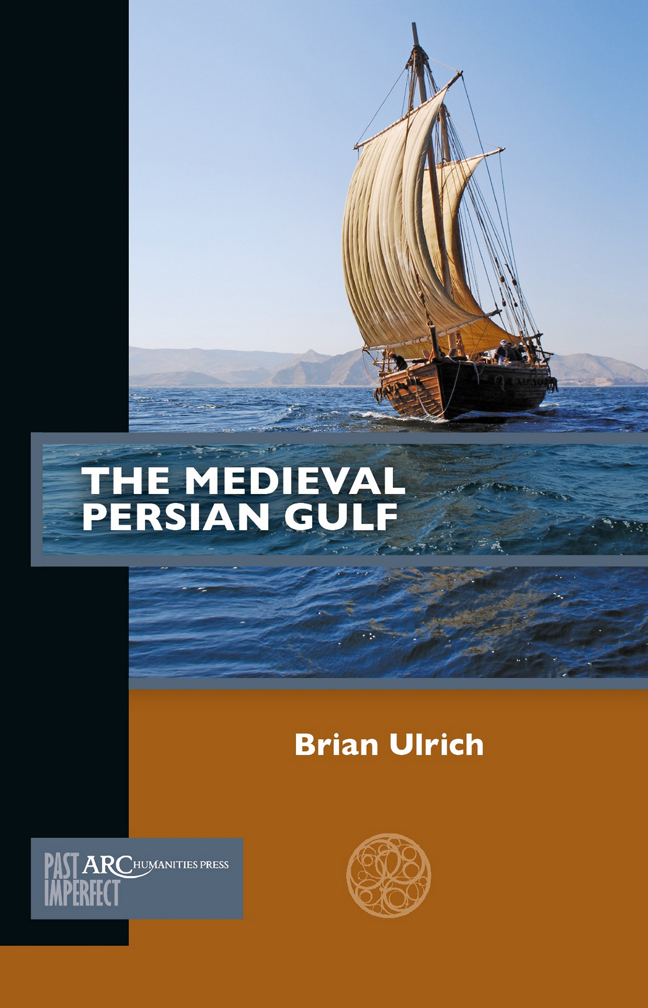Book contents
- Frontmatter
- Contents
- List of Illustrations
- Maps
- Timeline
- Introduction
- Chapter 1 Religious Diversity of the Early Islamic Era
- Chapter 2 Ethnic Diversity
- Chapter 3 The Society of Trade in the Early Islamic Period
- Chapter 4 New Trade Centres after 1000
- Chapter 5 Islamic Sects in the Late Medieval Gulf
- Chapter 6 Hormuz
- Conclusion
- Further Reading
Chapter 2 - Ethnic Diversity
Published online by Cambridge University Press: 20 February 2024
- Frontmatter
- Contents
- List of Illustrations
- Maps
- Timeline
- Introduction
- Chapter 1 Religious Diversity of the Early Islamic Era
- Chapter 2 Ethnic Diversity
- Chapter 3 The Society of Trade in the Early Islamic Period
- Chapter 4 New Trade Centres after 1000
- Chapter 5 Islamic Sects in the Late Medieval Gulf
- Chapter 6 Hormuz
- Conclusion
- Further Reading
Summary
As described in the introduction, today the name of the Gulf, either Persian or Arabian, is a matter of international dispute linked to historic claims and recent ambitions. Along with this goes also the rise of nationalism, nationalism based on a concept of nation-states as usually ethnically homogenous. In the Gulf, this means that Iran has sought to Persianize its Gulf regions as effectively as possible, while the Arab states routinely present through their heritage industry a purely Arab and sometimes even Bedouin past while worrying about the presence of large numbers of guest workers, particularly from South Asia, as threats to that heritage.
The ethnic composition of the Gulf, however, has long been diverse. Language is not a sure guide to ethnicity, but from the early medieval period up until today, speakers of Arabic and Persian have lived mingled together all around its shores; hymns in Beth Qatraye were sung in Persian, even as most people’s vernacular was close to Arabic. Significant populations of South Asian origin also stretched along at least the upper Gulf in Late Antiquity, forming a recognizable element with a remembered association with the subcontinent, but over the generations becoming part of the regional fabric steadily augmented by both voluntary migration and slavery. People from different regions of sub-Saharan Africa were also brought as slaves to the region down the centuries, and they, too, became a recognizable group even into the present.
Arabs and Persians
“Arab” was at first an ancient Mesopotamian term for those living in the desert between Mesopotamia and the fertile lands along the Mediterranean. Later, “Arabia” became the name of a Roman province stretching from the Sinai Penin-sula into what is now Jordan, and inhabitants of this province called themselves “Arabs.” In the following centuries, how-ever, the identity seems to have become much vaguer and far less commonly invoked, perhaps the way “North Ameri-can” might apply to inhabitants of the continent but has lit-tle practical significance. In poetry written in Arabic by north Arabians before the seventh century, the broadest identity is generally Maˁadd. This term referred to the largely autono-mous peoples living south of the heartlands of the Ghassan-ids in what is now Jordan and the Lakhmids by the Euphrates, two Arabic-speaking client dynasties of the Byzantines and Sasanians respectively.
During the seventh century, however, ideas of Arab ethnicity grew in importance.
- Type
- Chapter
- Information
- The Medieval Persian Gulf , pp. 29 - 42Publisher: Amsterdam University PressPrint publication year: 2023

